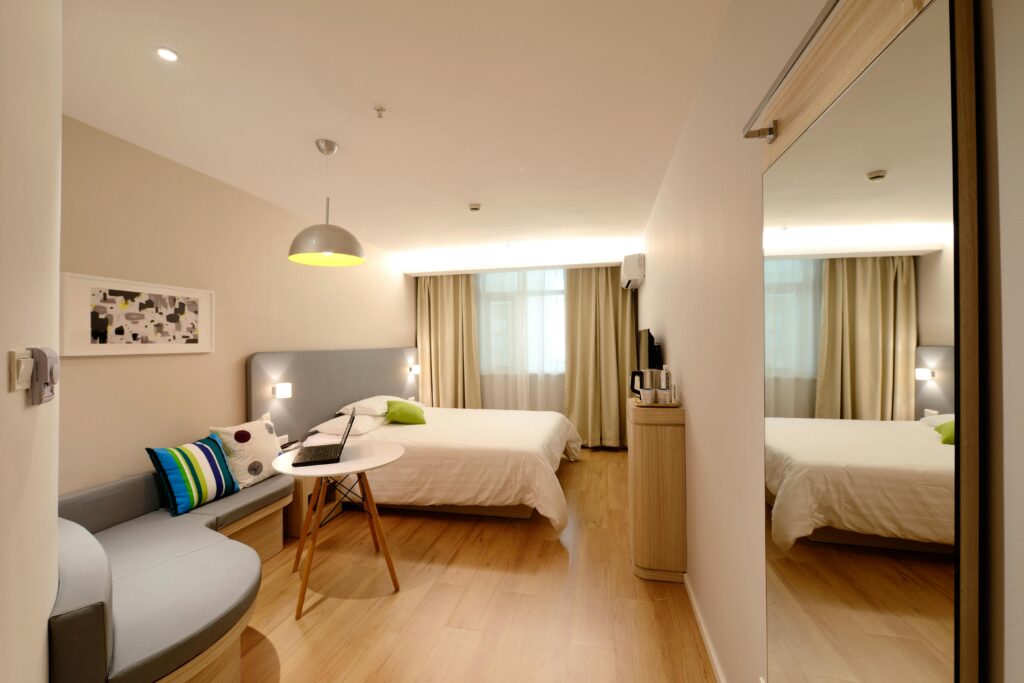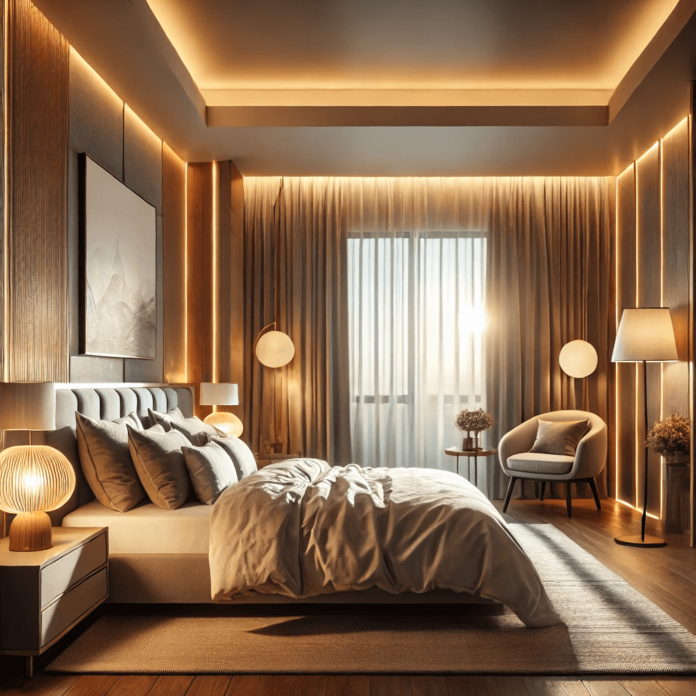Introduction
When it comes to designing a comfortable and inviting space, lighting plays a crucial role. These bedroom lighting tips will help you create a cozy bedroom lighting setup that enhances relaxation and comfort. From layering your lighting to using dimmer switches, the right lighting choices can turn your bedroom into the perfect retreat for unwinding. In this guide, we’ll explore how to combine ambient, task, and accent lighting to achieve the ultimate cozy and functional bedroom environment.
Essential Bedroom Lighting Tips for a Relaxing Space

When it comes to setting the right ambiance in your bedroom, following a few bedroom lighting tips can make a huge difference. Start by incorporating layered lighting, which includes ambient, task, and accent lighting. This combination allows you to control the mood of your bedroom based on different needs. For example, ambient lighting provides general illumination, while task lighting like bedside lamps is ideal for reading or working. Accent lighting can highlight certain areas or decor pieces, giving your bedroom a personalized and cozy feel. Dimmer switches offer versatility by letting you easily adjust the light levels, helping you create a calming and relaxing ambiance tailored to your mood or activity.
1. Layer Your Lighting
For optimal bedroom lighting, use a layered approach by combining ambient, task, and accent lighting. This mix ensures both functionality and a cozy atmosphere. Ambient lighting provides general illumination, task lighting is ideal for specific activities such as reading, and accent lighting can highlight features like artwork or architectural elements. Together, these layers create a balanced and functional lighting design.
2. Use Dimmer Switches for Flexibility
Installing dimmer switches in your bedroom gives you control over the brightness, allowing you to adjust the light intensity depending on your mood or activity. Dimming the lights in the evening helps create a calming, cozy environment ideal for winding down, while brighter light during the day or for tasks ensures functionality.
3. Incorporate Warm Lighting
Choose light bulbs that produce a gentle, warm glow to create a welcoming and soothing atmosphere in any room. Warmer light (with a color temperature of around 2700K to 3000K) mimics the golden light of the setting sun and can make your bedroom feel more welcoming and cozy. This type of lighting is ideal for creating a relaxing ambiance and is easier on the eyes before bedtime.
4. Add Bedside Lamps for Task Lighting
Bedside lamps are a must-have for task lighting, especially if you enjoy reading or working in bed. Adjustable lamps or those with dimmable features can be tailored to your specific needs, offering flexibility and function without overpowering the room.
5. Maximize Natural Light During the Day
Letting in natural light during the day can keep your bedroom feeling fresh and bright. Consider sheer curtains that allow daylight to filter through while still maintaining privacy. Maximizing natural light during the day helps create a dynamic balance with your artificial lighting at night.
6. Consider Smart Lighting Options
Smart lighting systems allow you to control your bedroom lights via a smartphone or voice command. You can easily adjust the brightness, and color temperature, and even set timers to transition the lighting from bright to dim, creating a stress-free and relaxing routine as you get ready for bed.
7. Avoid Harsh Overhead Lighting
Harsh overhead lighting can create an uninviting atmosphere in the bedroom. Instead, focus on softer light sources such as floor lamps, wall sconces, or pendant lights that distribute light more evenly. This helps reduce glare and enhances the overall coziness of the room.
Conclusion
Incorporating the right bedroom lighting tips can completely transform your space into a cozy and relaxing retreat. By layering different types of lighting, such as ambient, task, and accent lighting, you can create a balance between functionality and comfort. Dimmer switches offer flexibility, allowing you to adjust the light intensity based on your mood or activity, while warm white bulbs (2700K to 3000K) help set a soothing atmosphere perfect for winding down. Additionally, using bedside lamps or wall sconces for task lighting, such as reading or working, provides focused illumination without disturbing the room’s overall ambiance.
Natural light during the day can also play a significant role in brightening your bedroom, while soft, warm lighting at night creates a restful environment. Combining these elements ensures that your bedroom is not only functional but also inviting and conducive to relaxation. With these bedroom lighting tips, you can craft a space that feels warm, welcoming, and perfectly suited to your needs at any time of day.
FAQs
- What color temperature is best for bedroom lighting?
- A warm white light with a color temperature between 2700K and 3000K is perfect for fostering a cozy, relaxing ambiance in your bedroom, promoting comfort and rest.
- How can dimmer switches improve bedroom lighting?
- Dimmer switches offer flexibility by allowing you to adjust the brightness of your lights, creating a soothing ambiance for bedtime or a brighter setting for tasks.
- Are smart lighting systems worth it for bedrooms?
- Yes, smart lighting allows you to control your bedroom lights with ease, offering customizable settings that can improve your sleep routine.
- How can I maximize natural light in my bedroom?
- Use sheer curtains to let daylight in while maintaining privacy, and place mirrors strategically to reflect light throughout the room.
- Is overhead lighting necessary in a bedroom?
- Overhead lighting isn’t always necessary. Instead, consider using a combination of floor lamps, wall sconces, or pendant lights for softer, more inviting illumination.














